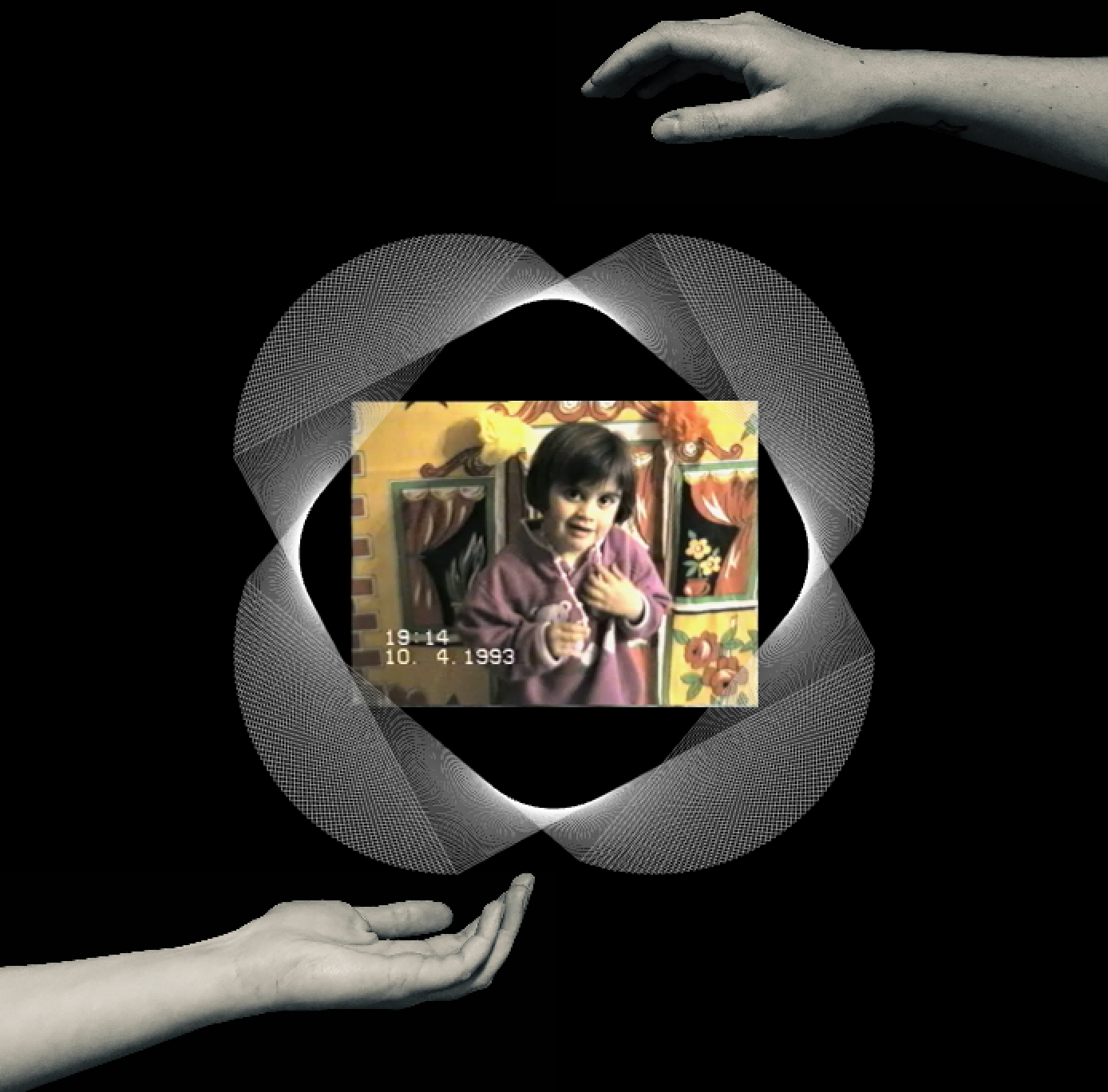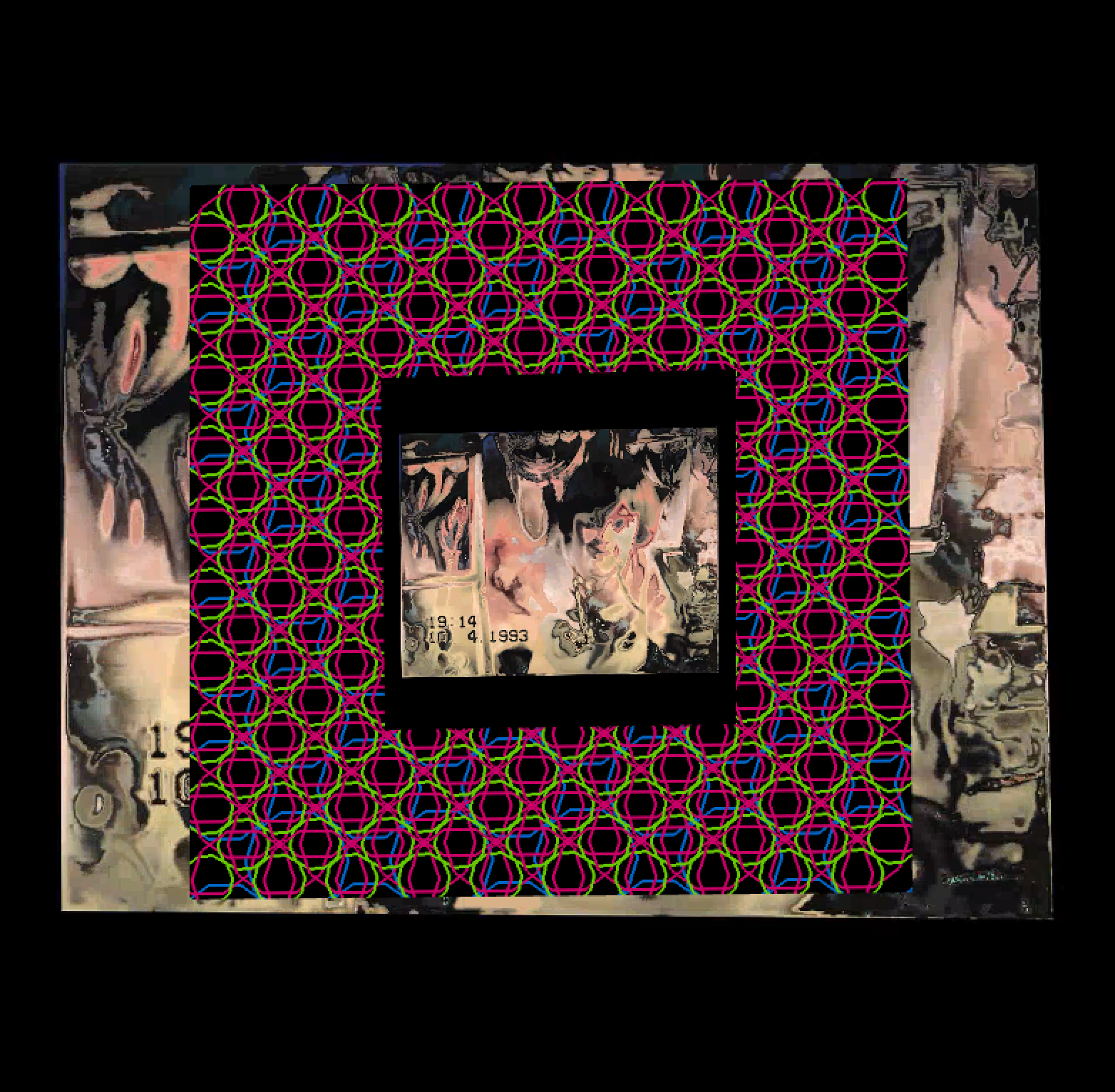
Folded Time
Folded Time is a projection mapping project created in openFrameworks for Goldsmiths' MA Computational Arts, Workshops in Creative Coding 1.
The work explores the concepts of "folds of time" and "queer temporality", using code to intertwine my past and present selves through family videos, images of my body and extra colourful graphics.
A scene from Folded Time.
Folded Time is inspired by the work of scholar Julian Carter around trans and queer presence and embodiment in contemporary dance. In his essay ‘Embracing Transition, Dancing In The Folds Of Time’ (Carter, 2013), he presents gender transition as a form of choreographic transition, in which multiple, opposite movements (forward, backward, diagonal) can coexist. So Mayer adopts Carter’s “folds of time” to describe retellings of and encounters with queer histories, “in which personal memory folds back on itself, as fuller versions of one’s own history are shared.” (Mayer, 2020). I chose to explore this idea of queer temporality as an enhanced, revelatory retelling of one’s own history by revisiting old family videos and “enhancing” them with my present understanding of my sexuality. I mixed bold and colourful graphics with video recordings of myself from 2019 and photos of my hands – a recurring and powerful symbol in lesbian tradition (Wednesday, 2008).
Mixing a childhood video with a more recent video of my face – my present self witnessing my younger self. The code for this scene was inspired by Denic Perevalov’s Mastering openFrameworks.
Combining a grid whose points are made of pixels from an old family video with a knot of points randomly moving across the canvas.
I chose to work primarily with video footage, image files and geometric shapes created with or modified through the openFrameworks toolkit. The piece is mapped to be projected onto a square structure, consisting of three concentric squares decreasing in size as they increase in depth towards the centre.







References
Carter, J. (2013) ‘Embracing Transition, Dancing in the Folds of Time’, The Transgender Studies Reader 2. Available at: https://www.academia.edu/4066608/Embracing_Transition_Dancing_in_the_Folds_of_Time?auto=citations&from=cover_page (Accessed: 13 December 2021).
Mayer, S. (2020) A Nazi Word for a Nazi Thing. London: Peninsula Press.
Wednesday (2008) ‘Freaky Hands: A Phenomenological Reflection on Lesbian Hands’, Journal of Lesbian Studies 12, 4, pp. 399-402. DOI: 10.1080/10894160802278408.




